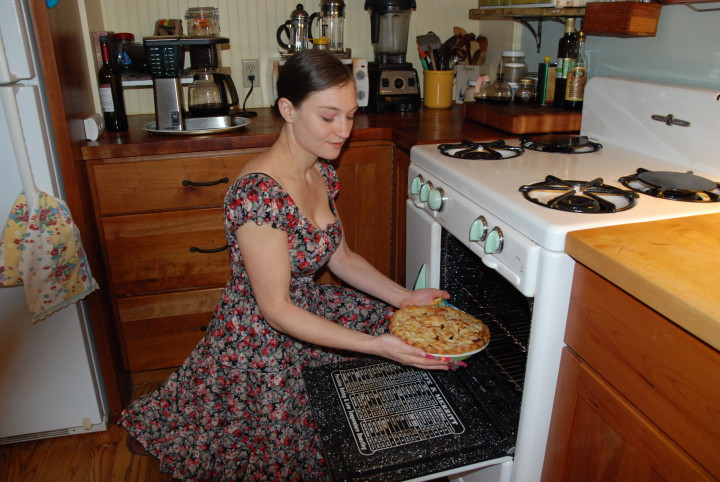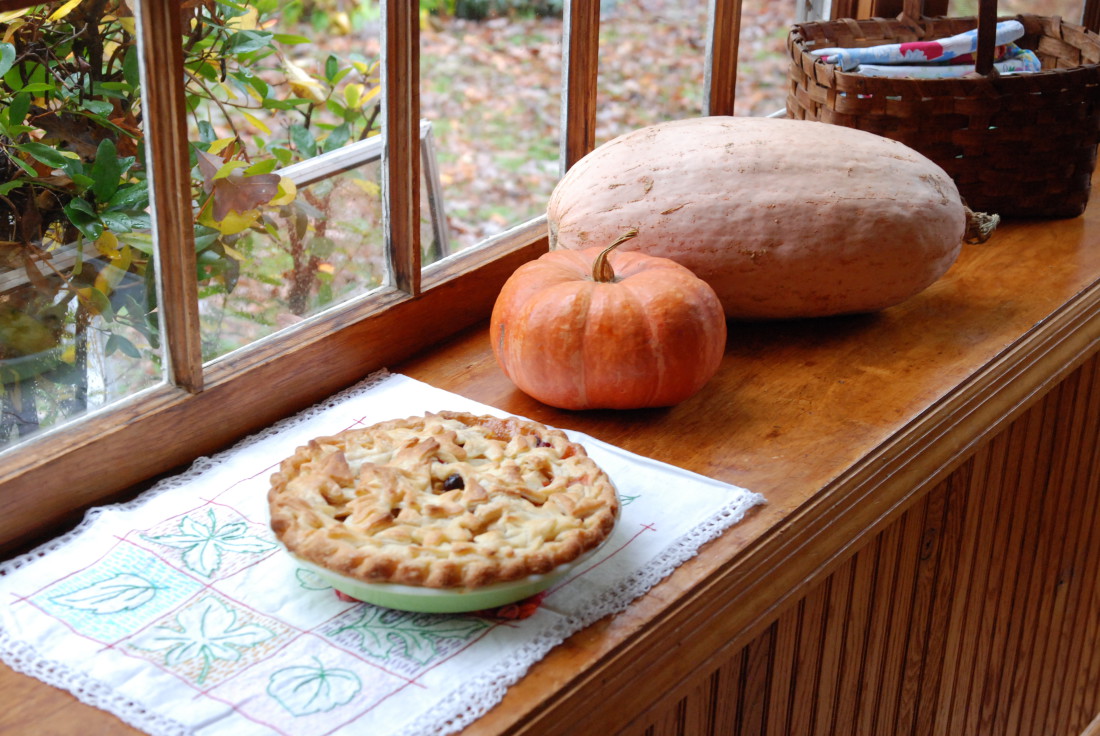Few foods are more closely associated with comfort than pie, and no holiday is more closely associated with pie than Thanksgiving.
In fact, pie is such a comfort food that Laurie Lamb, owner of Madison Pot Pie in Marshall, says she sells pies to chemotherapy patients who tell her pie is the one thing they can still eat and enjoy.
“When everything else tastes horrible, it seems they can still enjoy pie,” she says.
Described by Wikipedia as “a baked dish which is usually made of a pastry dough casing that covers or completely contains a filling of various sweet or savory ingredients,” a pie can be a full meal or a sweet treat.
“My favorite game to play is, what can go into a pie?” says Lamb, whose 8-year-old son once persuaded her to put pizza ingredients between two crusts.
Pies are mentioned in Greek literature as far back as 5,000 years ago, and most cultures have their own interpretations — samosas in India, for example, and empanadas in Latin America.
“All these cultures have their own versions, and for most people, that pie means home,” said Annie Erbsen, a pie aficionado whose mother, Barbara Swell, is the author of The Lost Art of Pie Making Made Easy (Native Ground Books and Music, $5.95). The two women teach classes and hold workshops on pie-making. And, in 2003, they created the annual Asheville Retro Pie Contest, a homemade pie competition, which Erbsen says is so popular it has inspired spinoff events all over the country.
Historically, pies have been popular because they are portable, with the crust acting as a container for the rest of the meal. In Cornwall, England, miners used to carry Cornish pasties that had savory filling in one end and sweet in the other.
In more recent history, pies became a test of homemaking ability, says Swell. Women were tasked with making the perfect flaky, golden crust, and many cooks became intimidated by the challenge.
Most crusts aren’t terribly difficult, although quality can be affected by many things, including room temperature.
The most difficult crust she has made, Erbsen says, is her own gluten-free crust.
“I developed a severe gluten intolerance, and I just didn’t want to give up pie,” she says. “But I’m a scientist, so I knew I could solve this.”
She read and researched the problem and experimented until she came up with a delicate, flaky crust that most people don’t know is gluten-free until she tells them. Her recipe includes precise percentages of superfine white rice flour, millet flour, tapioca starch, dry powdered milk, potato starch, xanthum gum and other ingredients. Its assembly, she says, requires a gentle touch and very meticulous measurements.
The most important thing to remember when making any pastry crust is that it should be handled as little as possible. The tiny beads of shortening (vegetable shortening, butter or lard — cooks usually swear by their favorite of the three or a combination) are what make the crust flaky, so the shortening needs to start out — and stay — cold.
Pastry isn’t the only possibility for a crust, Lamb says. She uses cornbread for her chili pot pie and mashed potatoes for shepherd’s and pot roast pies.
Once the crust is made, the filling it is up to the taste of the baker.

Lamb loves to use leftovers — meat, gravy and vegetables — for her pies. A pot roast, for example.
“You just shred the meat and thicken the gravy, add some vegetables, and you have a pie filling,” she says.
Her chicken pot pie begins with a béchamel, or white sauce (butter, flour and milk, cream or half and half and a touch of nutmeg) and is then built with chicken and vegetables.
“The most important thing, I think, is to use fresh ingredients,” Erbsen says. “Pie-making is an art; it is done with love, and most people who eat a fresh pie can feel that love.”
Lamb started making her pies for convenience. As a single mother, she had little time to cook fresh foods during the week, so she started making and freezing pot pies on the weekend. The business began a couple of years later, as people began asking to buy her pies for their own freezers.
“I think pies are fun,” she says. “I spend about 80 percent of my time thinking about them. They make people happy.”
Erbsen believes the love of pie runs deep in people.
“It fills a longing for home – or for what you wish home had been,” she says.
For information on pie classes or on Barbara Swell’s book, visit www.nativeground.com or email info@nativeground.com.
Madison Pot Pies is at 33 S. Main St., Marshall. 545-0664.




Before you comment
The comments section is here to provide a platform for civil dialogue on the issues we face together as a local community. Xpress is committed to offering this platform for all voices, but when the tone of the discussion gets nasty or strays off topic, we believe many people choose not to participate. Xpress editors are determined to moderate comments to ensure a constructive interchange is maintained. All comments judged not to be in keeping with the spirit of civil discourse will be removed and repeat violators will be banned. See here for our terms of service. Thank you for being part of this effort to promote respectful discussion.